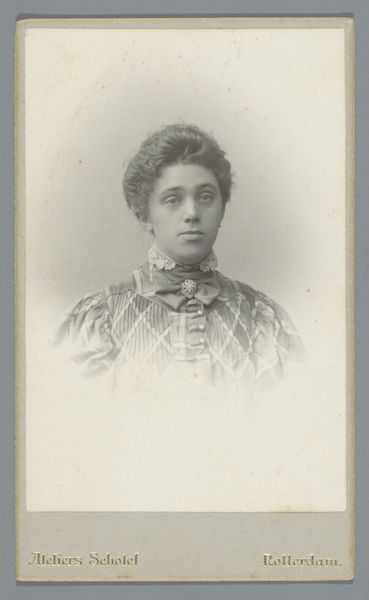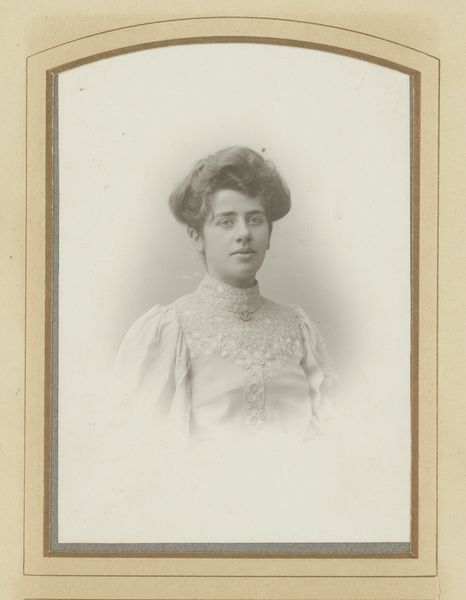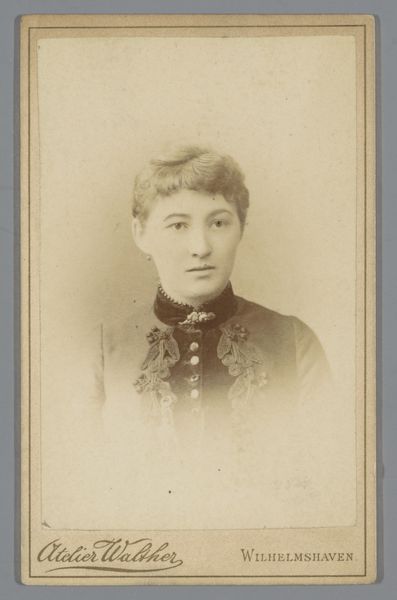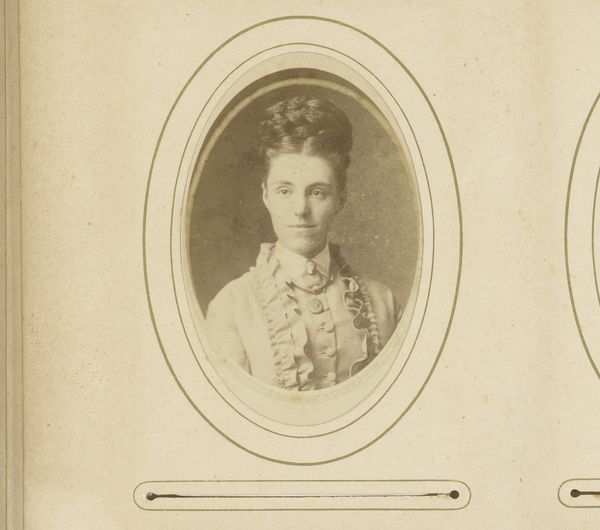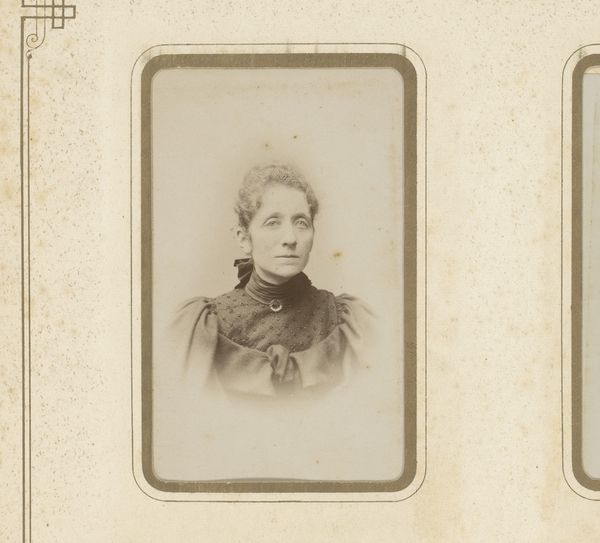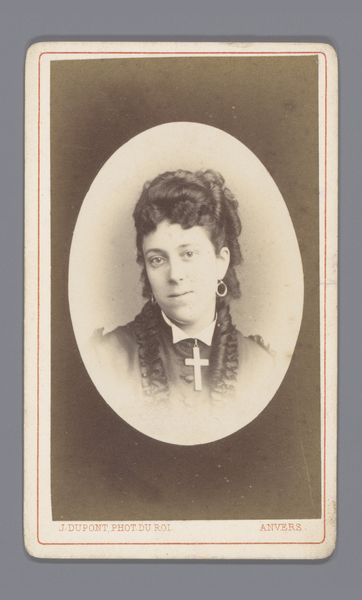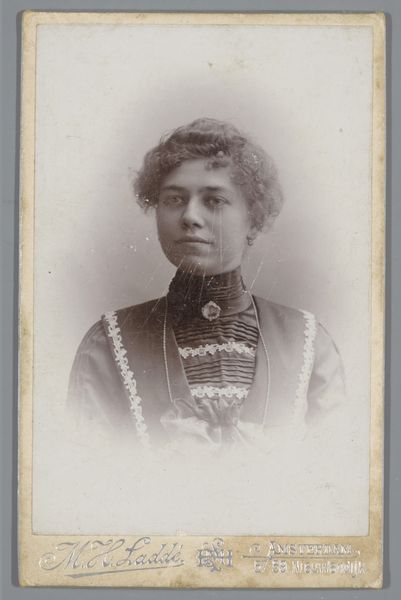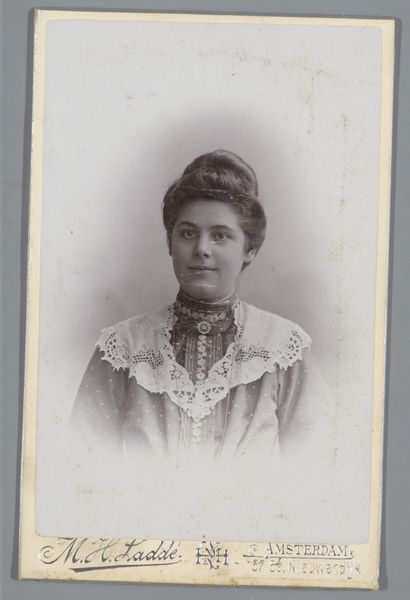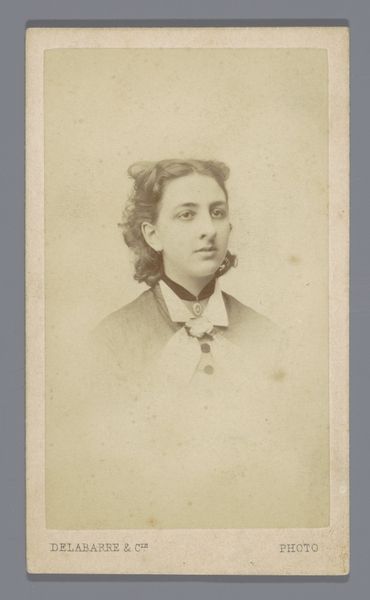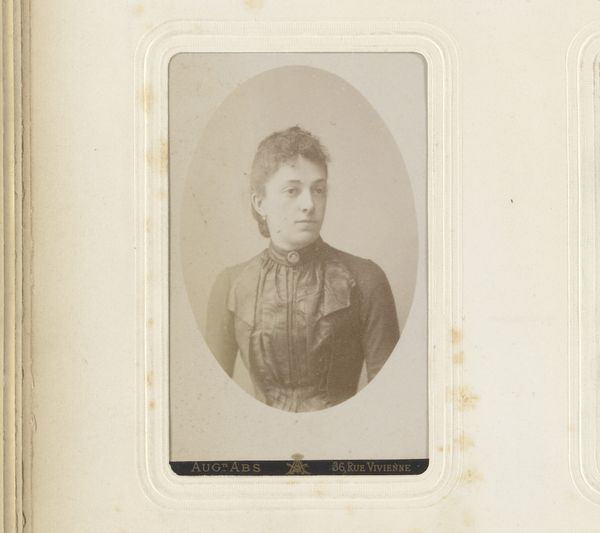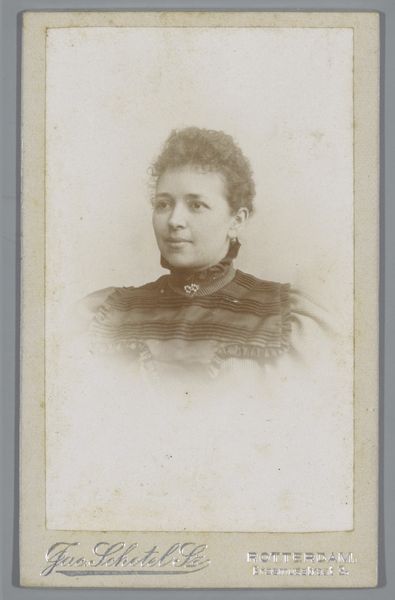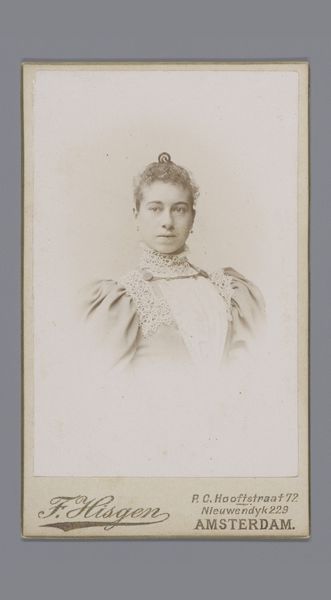
photography
#
portrait
#
photography
#
historical fashion
Dimensions: height 103 mm, width 63 mm
Copyright: Rijks Museum: Open Domain
Curator: Immediately, I’m drawn to the starkness, the almost severe formality, softened only by the subject’s youth. Editor: Yes, a stillness captured through photography. We're looking at "Portret van een onbekende jonge vrouw," which translates to "Portrait of an Unknown Young Woman," dating from around 1900 to 1914. It's a compelling, unlabeled work, leaving her identity a mystery. Curator: The composition is so rigid. Her gaze is direct, almost confrontational. Note the tonal range in this sepia print - observe how limited and intentional it is, contributing to that gravity. And consider the textures implied: the velvet of her garment, the plumage on her hat. Each seems to have been specifically selected. Editor: Exactly! These portraits were commodities, weren't they? Think about the social rituals surrounding portraiture in this era. Who commissioned such photos, and why? Was it about cementing social status, or capturing a likeness for posterity? Also notice how the embellishments - her feathered hat, her detailed ruffled neckline - show the height of historical fashion during the Edwardian era, perhaps a glimpse of her possible high class standing within society. Curator: The repetitive, almost mechanical arrangement of the buttons draws the eye downwards. It provides a sense of linear order contrasting with the softness of her face. There’s an interesting tension created between these constructed formal elements and what may be construed as inherent beauty. The oval of her face juxtaposes with the square frame of the image itself, and, yes, those buttons, an ordered and rigorous articulation. Editor: These were images circulating, being distributed, traded among networks. Family, acquaintances, potential suitors maybe? As well, consider that photography here offered a kind of democratization, more attainable than painting. So what did this mean for identity representation amongst various classes? These details open doors into a fascinating cultural world of that period. Curator: Yes, in the way this medium mediates the visual impact. It is certainly a fascinating lens – pardon the pun! – through which to see that era and understand these cultural considerations around social presentation and emerging definitions. Editor: Agreed. Examining the "Portret van een onbekende jonge vrouw" gave me the thought of just how ubiquitous such images of everyday life were in setting historical records during this period, for better and worse.
Comments
No comments
Be the first to comment and join the conversation on the ultimate creative platform.
